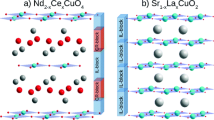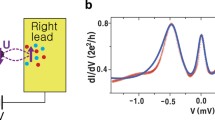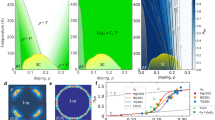Abstract:
The interlayer tunneling mechanism of the cuprate high temperature superconductors involves a conversion of the confinement kinetic energy of the electrons perpendicular to the CuO-planes (c-axis) in the normal state to the pair binding energy in the superconducting state. This mechanism is discussed and the arguments are presented from the point of view of general principles. It is shown that recent measurements of the c-axis properties support the idea that the electrons substantially lower their c-axis kinetic energy upon entering the superconducting state, a change that is nearly impossible in any conventional mechanism. The proper use of a c-axis conductivity sum rule is shown to resolve puzzles involving the penetration depth and the optical measurements.
Similar content being viewed by others
Author information
Authors and Affiliations
Additional information
Received: 5 January 1998 / Accepted: 17 March 1998
Rights and permissions
About this article
Cite this article
Chakravarty, S. Do electrons change their c-axis kinetic energy upon entering the superconducting state?. Eur. Phys. J. B 5, 337–343 (1998). https://doi.org/10.1007/s100510050451
Issue Date:
DOI: https://doi.org/10.1007/s100510050451




